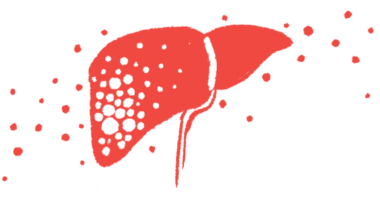FAQs About Porphyria

Porphyria refers to a group of disorders in which affected individuals cannot make hemoglobin. Hemoglobin is the protein that binds oxygen in red blood cells. Due to this inability, porphyrins — chemicals that the body normally uses to make hemoglobin — build up in the body.
Following are answers to some frequently asked questions about porphyria.
Are all porphyrias the same?
No, there are different types of the disease, based on the genetic cause and the symptoms.
Cutaneous porphyria affects the skin. Patients start blistering even after short exposure to sunlight. This can cause scarring and infection. Congenital erythropoietic porphyria, erythropoietic protoporphyria, hepatoerythropoietic porphyria, and porphyria cutanea tarda are all types of cutaneous porphyria.
Acute porphyria appears quickly and lasts a short time. It primarily affects the nervous system, causing abdominal pain, vomiting, diarrhea, and constipation. Some patients also may experience muscle weakness, seizures, fever, and mental alterations, which may include anxiety and hallucinations. Acute porphyria can be life-threatening, especially if the disease affects the muscles that control breathing. Acute intermittent porphyria and ALAD deficiency porphyria are both acute forms of acute porphyria.
Hereditary coproporphyria and variegate porphyria are two forms of the disease that can have both acute and cutaneous symptoms.
The disease also can be divided into two broad types: erythropoietic and hepatic. In erythropoietic porphyria, porphyrins first build up in the bone marrow, where the body makes blood cells. Erythropoietic protoporphyria and congenital erythropoietic porphyria cause low numbers of red blood cells and enlargement of the spleen.
In hepatic porphyria, porphyrins build up in the liver, causing abnormal liver function and increasing the risk of liver cancer.
How common is porphyria?
Researchers do not know the exact prevalence of the disease. However, they estimate it to be between one in 500 to one in 50,000 people worldwide (though certain types of the disease are more common than others.) For example, Porphyria cutanea tarda is the most common type of the disease, while acute intermittent porphyria is the most common form of acute porphyria in most countries.
What causes it?
Mutations in genes involved in making heme cause most forms of the disease. These include ALAD, ALAS2, CPOX, FECH, HMBS, PPOX, UROD, and UROS.
Porphyria cutanea tarda results from both genetic and nongenetic factors. About 20% of cases are related to mutations in the UROD gene. A combination of increased iron in the liver, alcohol, smoking, and liver infections (like HIV or hepatitis C) can cause the remaining 80% of cases. Mutations in a gene called HFE also can cause this type of disease and it is possible there may be other genetic causes that researchers have not identified yet.
How do doctors diagnose it?
Doctors may use blood, urine, and stool tests to diagnose the disease.
The tests can help determine if you have too much porphyrin in your blood, urine, and stool samples. The results of these tests may be confirmed by a genetic test looking for specific gene mutations known to cause the disease.
How do doctors treat it?
The treatment for porphyria depends on the severity of symptoms and the specific type of disease that you may have. Doctors usually treat acute porphyrias with heme infusions to slow the body’s production of porphyrins. In severe cases, patients may require liver transplant.
If you have cutaneous porphyrias, you should take care to avoid sunlight as much as possible. Doctors may treat you by taking blood draws to reduce your iron levels.
Diet and nutrition changes also may improve your symptoms. A diet with average-to-high levels of carbohydrates may help reduce symptoms. Your doctor also may prescribe vitamin and mineral supplements.
Can my children inherit porphyria?
Yes, most cases are inherited. Depending on the type, the disease can be inherited in an autosomal dominant or autosomal recessive pattern.
In a dominant pattern of inheritance, a single copy of a faulty gene can cause the disease. So, if you or your partner have the disease, your children will have a 50% chance of inheriting the disease.
In the recessive pattern of inheritance, two copies of a disease-causing mutation are necessary for the disease to develop. So, if one parent has the disease, and the other parent has no copies of a disease-causing mutation, their children have a 50% chance of being carriers of the disease, but are unlikely to develop any symptoms. However, if the other parent is a carrier, the children will have a 50% chance of inheriting two copies of the disease-causing mutation and developing the disease. The other children will be carriers of the disease-causing mutation.
Last updated: May 26, 2020
***
Porphyria News is strictly a news and information website about the disease. It does not provide medical advice, diagnosis, or treatment. This content is not intended to be a substitute for professional medical advice, diagnosis, or treatment. Always seek the advice of your physician or other qualified health provider with any questions you may have regarding a medical condition. Never disregard professional medical advice or delay in seeking it because of something you have read on this website.






